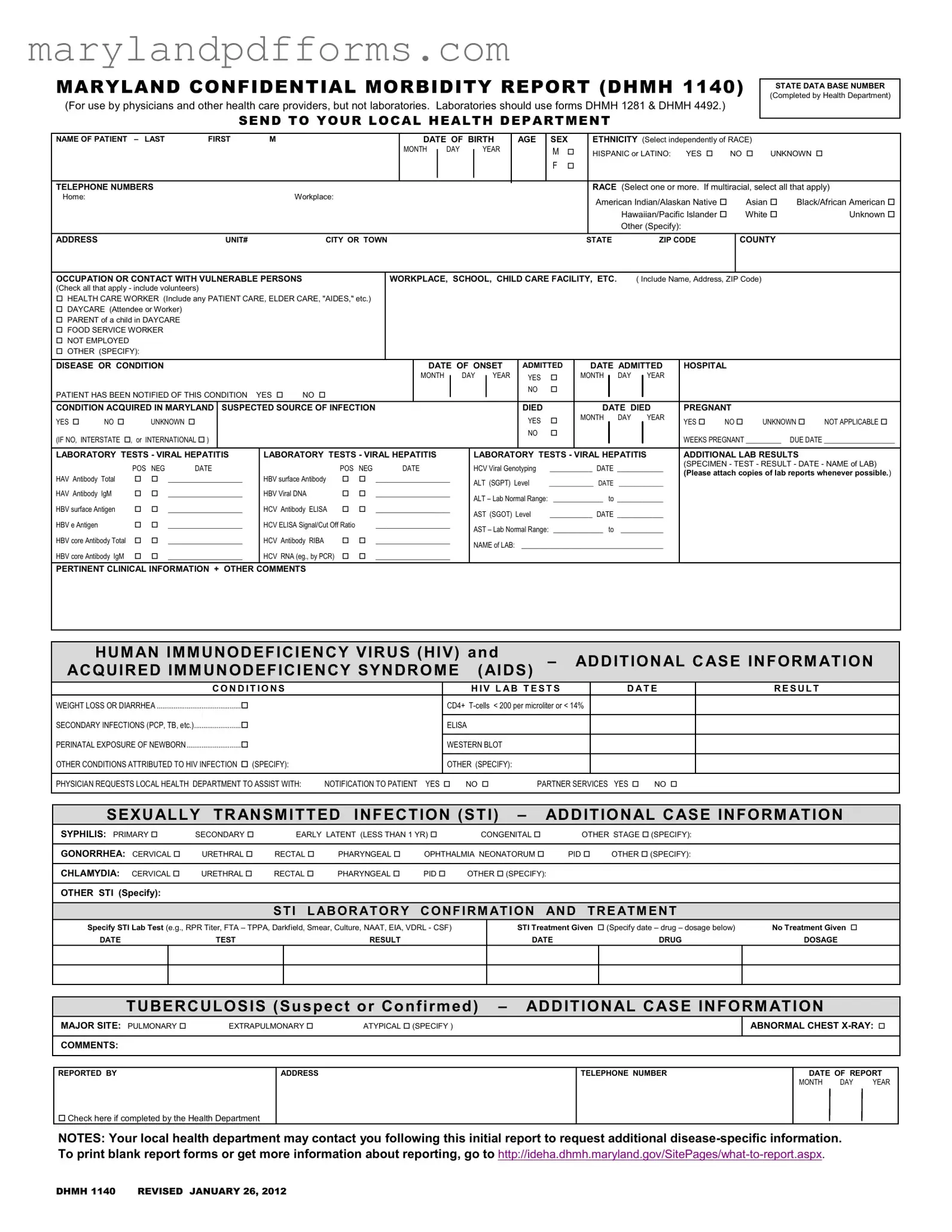The Maryland Confidential Morbidity Report (DHMH 1140) is a form designed for use by healthcare providers to report specific diseases and conditions. It helps local health departments track morbidity data and manage public health effectively.
This form is intended for physicians and other healthcare providers. Laboratories should use different forms, specifically DHMH 1281 and DHMH 4492.
The form requires detailed patient information, including:
-
Patient's name, date of birth, age, and sex
-
Ethnicity and race
-
Contact information
-
Occupation and potential contact with vulnerable populations
-
Details about the disease or condition, including onset date and hospitalization information
-
Laboratory test results
After completing the form, send it to your local health department. Ensure all required fields are filled out to avoid delays in processing.
Is patient consent required before reporting?
Yes, it is essential to notify the patient about the condition being reported. The form includes a section to indicate whether the patient has been informed.
What types of diseases or conditions should be reported?
The report covers various conditions, including:
-
Viral hepatitis
-
HIV/AIDS
-
Sexually transmitted infections (STIs)
-
Tuberculosis
Specific instructions for each condition are included on the form.
What happens after I submit the report?
Your local health department may contact you for additional information related to the reported case. This follow-up helps ensure accurate data collection and public health response.
Can I attach additional documents to the report?
Yes, you should attach copies of any relevant laboratory reports whenever possible. This additional information can be crucial for effective case management.
If you have questions, you can visit the Maryland Department of Health's website or contact your local health department for guidance. They can provide specific assistance related to reporting requirements.
For more information about reporting and to access blank report forms, visit
this link
.
